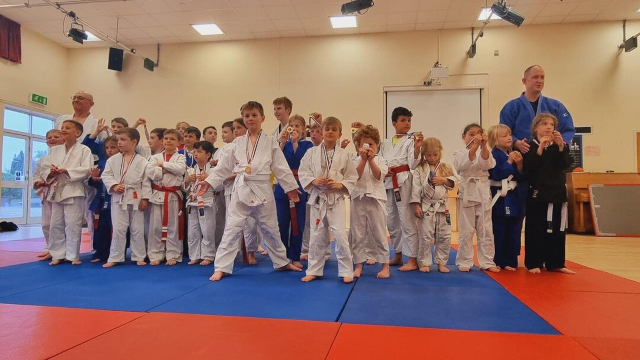The History Behind Judo!
Come and Learn About The Gentle Way!

Judo History
Judo was developed in Japan towards the end of the 19th century by Professor Jigaro Kano, the President of the University of Education in Tokyo. Judo has evolved from being a martial art into an Olympic and, in terms of participants, the worlds second most popular sport.
Professor Kano was bullied as a young boy and had learned the martial art of JuJitsu for his own self-defence. He strongly believed that the physical, as well as mental development of children was critical to help them grow into healthy, well-rounded adults. However, he felt that JuJitsu techniques were too difficult and dangerous (such as punches and kicks) to be used in schools and set about integrating what he considered to be the best of the JuJitsu techniques into a gentler system whose goal would be physical fitness for all. And so Judo was born.
The word Judo consists of two Japanese characters "ju" which means "gentle" and "do" which means "the way". So Judo literally means "the way of gentleness". A Judo player wears a special outfit made of heavy cotton material, and consists of a jacket, trousers and a belt. The colour of the belt signifies the experience of the player. Judo was introduced into the Olympic Games in 1964 and is now practised by millions of people throughout the world.
Physical
Judo provides children with physical exercise and a good cardio-vascular workout. It is essentially a defensive sport involving two players, each of whom uses techniques and quick reflexes, plus balance, power and movement to get the other partner off-balance and take them down onto the mat. Skill, technique and timing, rather than brute strength, are the ingredients for success in Judo. Playing and rolling together on the mat develops equilibrium, spatial orientation and awareness, agility and responsiveness, flexibility and basic strength.
Psychological
Judo provides the means for attaining self-confidence, concentration and leadership skills. Children who learn the simple and effective self-defence techniques are more self-aware and confident, and less prone to bullying or victimisation. Children of all shapes, body sizes and fitness levels can find their niche in judo. Overweight children will often come to Judo because they dont have to run, catch or hit a ball but can develop their overall body confidence in learning how to fall, throw and tumble with a lot of fun along the way.
Social
Much of the teaching of Judo is based on respect and discipline. Whilst classes will be fun, Judo has been proven to help with childrens general development and self-discipline. Also, as there is a requirement to train with a partner and each partner is dependent upon the other to progress, Judo is good for developing teamwork and mutual responsibility. Different children gain different things from judo, some love the dynamic nature and the rough and tumble of the sport. Others relish the competitive edge and the opportunity to advance through the grading system. Judo draws people from all walks of life and social backgrounds. The camaraderie that occurs among partners who have shared the rigors of physically difficult and mentally demanding training are deep, often providing the basis for relationships that last a lifetime.


